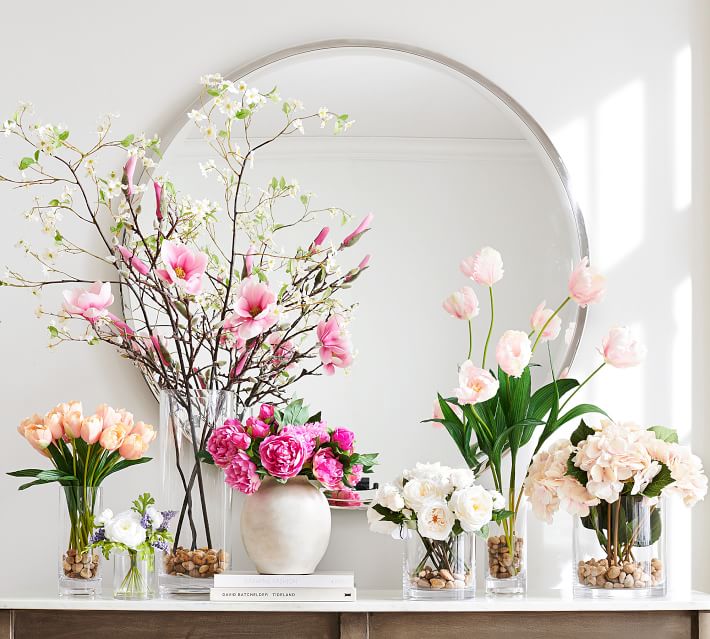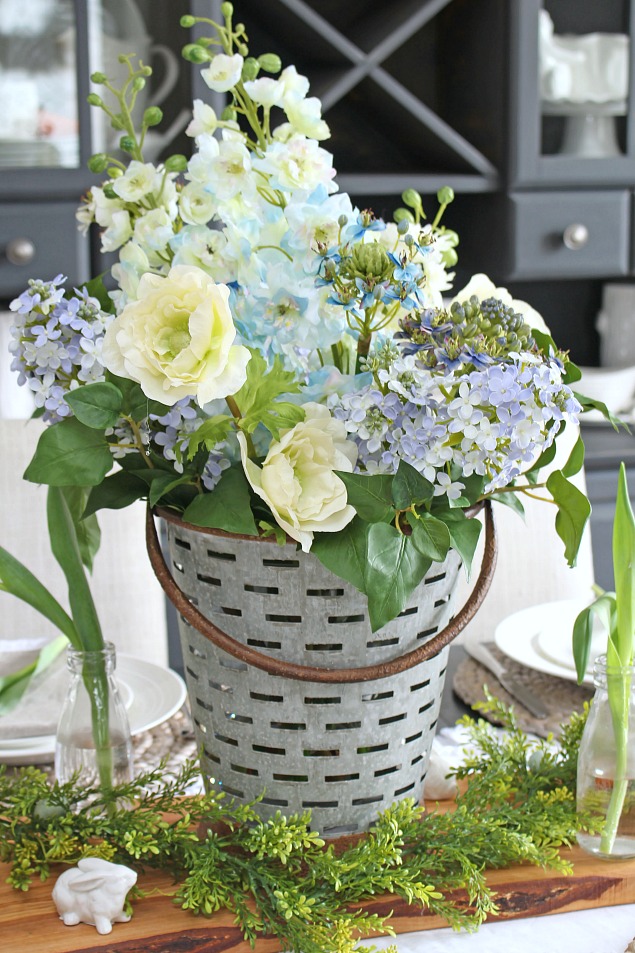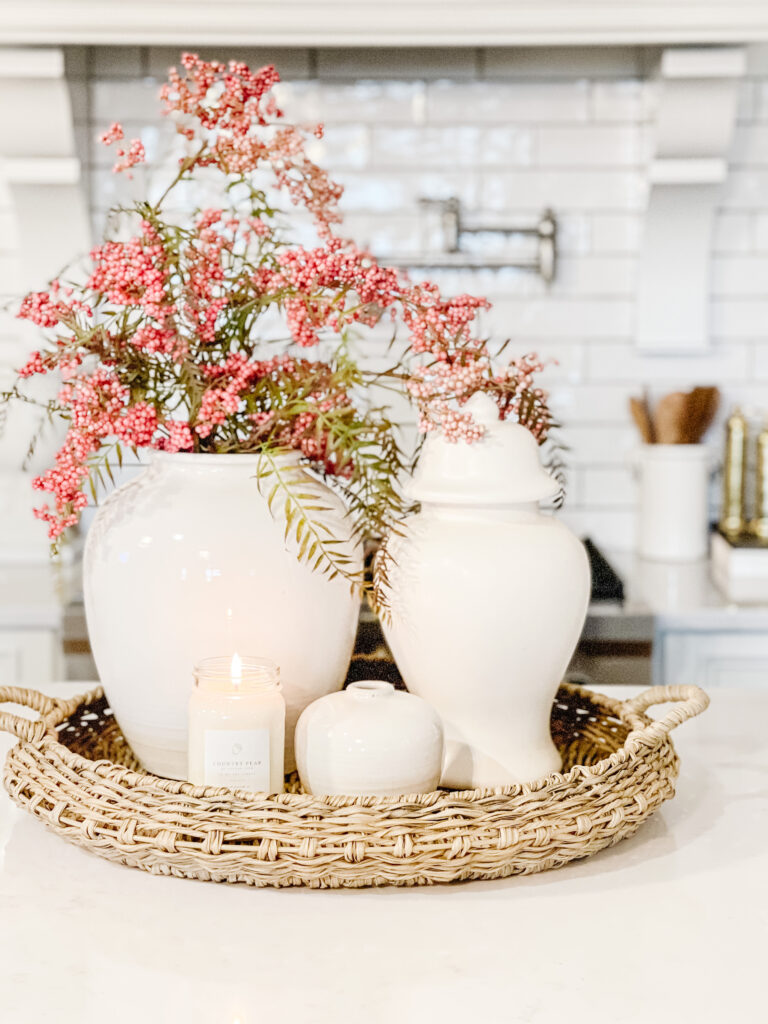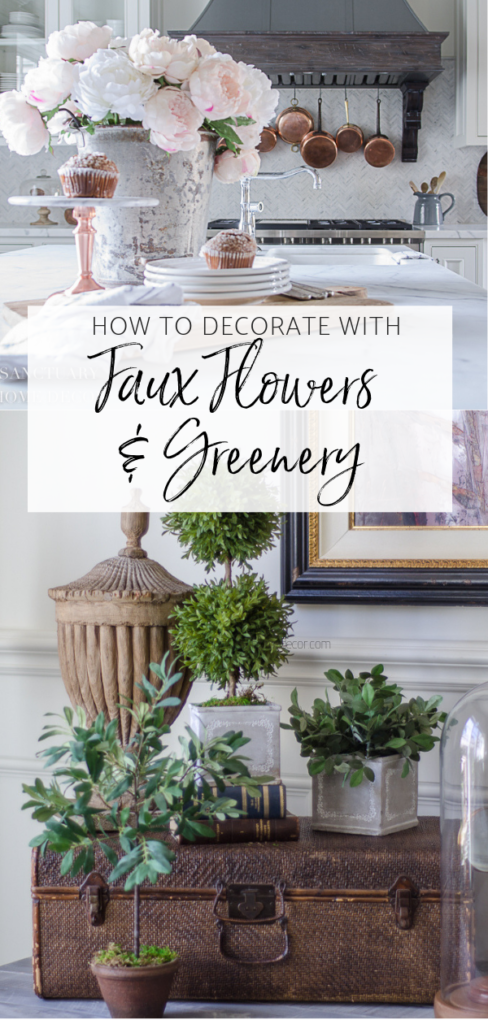Faux flowers have come a long way from the gaudy plastic blooms of the past. Today, they are a chic and versatile option for home decor enthusiasts. Whether you’re looking to add color to your living space or create something unique for special occasions, faux flowers offer endless possibilities. In this comprehensive guide, we’ll explore the art of decorating with faux flowers, share personal experiences, and provide valuable tips to help you make the most of these beautiful blooms.
The Allure of Faux Flowers
My journey with faux flowers began when I realized that my love for gardening didn’t match my busy lifestyle. I wanted to bring the beauty of nature indoors without the commitment of caring for live plants. Faux flowers provide a perfect solution—vibrant, beautiful, and hassle-free.
Why Choose Faux Flowers?
- Low Maintenance: No watering, trimming, or sunlight required.
- Allergy-Friendly: Enjoy the beauty of flowers without the sneezing.
- Longevity: Unlike fresh flowers, faux blooms last for years, retaining their color and shape.
- Cost-Effective: While initial costs may be higher, they pay off over time without the need for replacements.
Types of Faux Flowers
Not all faux flowers are created equal. Here are some popular options when it comes to selecting the perfect artificial blooms:
Silk Flowers
Silk flowers are the most common type of faux flower. They are soft, flexible, and can replicate the appearance of real petals beautifully.
Plastic Flowers
More affordable and durable, plastic flowers tend to have a shinier finish. They are often used for outdoor decorations due to their resilience.

Latex Flowers
Latex flowers are known for their realistic texture. They mimic the softness of real petals and are more lifelike than silk or plastic options.
How to Choose the Right Faux Flowers
When selecting faux flowers for your decor, consider the following factors:

Color Schemes
Before picking flowers, assess your existing color palette. Choose blooms that complement or contrast beautifully for a stunning effect.
Room Compatibility
Different rooms evoke different moods. For a serene bedroom, opt for soft pastels, while vibrant colors work well in kitchens and dining areas.

Personal Experience
I once transformed my dull hallway by using bright faux flowers in a tall vase. The pop of color not only brightened the space but also created a warm and inviting atmosphere.
Creative Ways to Use Faux Flowers in Your Home
Centerpieces for Dining Tables
Creating a stunning centerpiece can elevate your dining experience. Use a mix of faux flowers to make a statement arrangement.

Wreaths and Garlands
Faux flowers are perfect for creating seasonal wreaths and garlands. Incorporate them into your decor to celebrate different occasions.
Wall Art
Consider using faux flowers in wall art. Floral frames or flower wall hangings add a unique, three-dimensional element to your decor.

Seasonal Decor
Switch out faux flowers to match the seasons. Use pastel blooms for spring and deep, rich colors for fall. The beauty of faux florals is that they are available in any color, making it easy to rotate decor.
Care and Maintenance of Faux Flowers
Although faux flowers are low maintenance, they still require some care to keep them looking fresh and attractive.

Dusting
Dust faux flowers every few weeks to prevent build-up. A microfiber cloth or a soft brush works best.
Cleaning
For deeper cleaning, use a damp cloth with mild soap. Avoid submerging flowers in water, as this can damage them.

Pros and Cons of Faux Flowers
| Pros | Cons |
|---|---|
| Long-lasting and durable | May look less realistic than fresh flowers |
| Allergy-friendly | Initial cost can be higher |
| Available year-round | No fragrance |
| Variety of styles and colors | Aesthetic may not suit all decor styles |
Faux vs. Real Flowers: A Comparison
| Aspect | Faux Flowers | Real Flowers |
|---|---|---|
| Maintenance | Low – no watering needed | High – requires watering and care |
| Longevity | Years | Days to a week |
| Cost | Initial investment is high, long-term savings | Inexpensive but requires regular purchases |
| Allergies | None | Can trigger allergies |
| Realism | Depends on quality | Highly realistic and fragrant |
Frequently Asked Questions (FAQs)
Can faux flowers look realistic?
Absolutely! The quality of faux flowers has improved dramatically. High-quality silk or latex flowers often look incredibly lifelike.
How do I style faux flowers for different seasons?
For spring, choose soft pastels and whites. In summer, go for bright and bold colors. In autumn, deep reds and oranges work beautifully, while winter can be represented with evergreens and whites.
Are faux flowers good for outdoor use?
Yes, many faux flowers are made with UV-resistant materials, making them suitable for outdoor arrangements. Just check the labels when purchasing.
What are the best faux flowers for beginners?
Sunflowers, roses, and peonies are great starting points. They are versatile and work well in various arrangements.
How can I make my faux flowers last longer?
Keep them out of direct sunlight to prevent fading, dust them regularly, and clean them whenever necessary.
Conclusion
Decorating with faux flowers can transform your space into a vibrant and inviting environment. With so many options available, it’s easy to find the perfect faux blooms that suit your style and needs. Remember, the key is to choose quality faux flowers that look realistic and complement your decor. So go ahead, unleash your creativity, and enjoy the beauty of artificial flowers in your home!